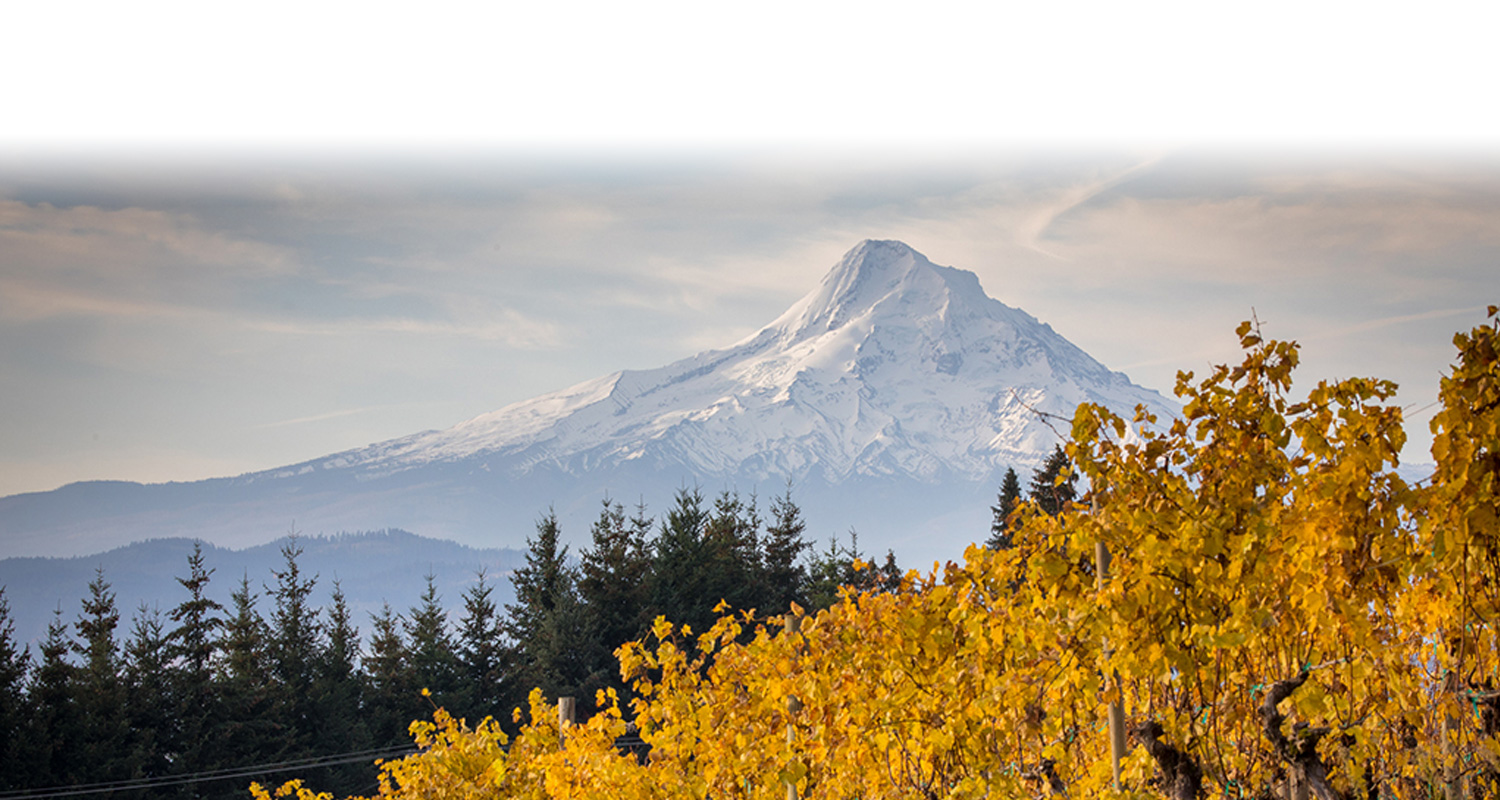The Columbia Gorge AVA
From west to east, losing an inch of rain per mile and gaining a whole lot of sun, it’s an amazing combination of climate, soil and geology.
EDITOR’S NOTE: Debby Phaneuf is the Executive Coordinator of the Columbia Gorge Winegrowers Association. She can be reached by calling the Association office at (541) 965-1528 or by e-mail at coordinator@columbiagorgewine.com.
By Debby Phaneuf
Located about an hour due east of Vancouver, WA., the Columbia Gorge AVA lies in one of the world’s most climatically diverse places.
The Gorge, designated as a National Scenic Area, is the largest of its kind in America at 292,500 acres. The land is defined by the Columbia River as it cuts through the Cascade Mountain Range and makes its journey west to the Pacific Ocean.
The short, dramatic, transition in landscape and climates from hot, dry desert in the East to the foothills of the Cascades, with its cool moisture from the ocean in the West, is what makes this area so unique. From west to east, losing an inch of rain per mile and gaining a whole lot of sun, it’s an amazing combination of climate, soil and geology.

Serving as the boundary between the states of Oregon and Washington, the Columbia River winds its way through the western portion of the Columbia Gorge AVA. The zig zag of the river is shown from Oregon, looking into Washington.
The Columbia Gorge was designated as an official AVA in 2004. Encompassing land on both the Oregon and Washington sides of the Columbia River, the AVA’s climate varies in a three-dimensional way. Proximity to the Columbia River has an effect on the climate. How high a vineyard is located will have a major impact on the grapes.
Vineyards safe from winter’s bud freezing temperatures often only receive sufficient heat to ripen early maturing wine grapes such as Gewurztraminer, Pinot Gris, Chardonnay and Pinot Noir.
Dams along the Columbia River have tempered the mighty River’s seasonal flow fluctuations and have created a massive thermal mass. This thermal mass and the prevailing wind from the west protect vines from winter’s excessive cold and moderates summer’s heat.
As the air flows west to east, it warms. As the marine air flows over the Cascades it precipitates its water to gain altitude. The Columbia Gorge AVA’s western boundary is approximately 24 miles east of the crest of the Cascades. As the marine air enters the Columbia Gorge AVA, rainfall is about 36 inches per year. Where that air exits the Gorge to the east, it will leave less than 10 inches per year.
The Columbia Gorge has long been famous for its fine pears, apples, cherries and other fruit. Early settlers planted grape vines along the Columbia’s shores. The vines prospered but there were few who recognized their ease of growing with the goal of making wine.
The Columbia Gorge lay as an undiscovered viticultural gem exploited by a few brave souls in the early 1970’s. In the late 1980’s and early ‘90’s some of the fruit from the early vineyards planted by McAndrew, Henderson, and Blanchette started getting into the hands of very good winemakers. These winemakers were willing to experiment and were able to recognize quality wine grapes. Soon the Columbia Gorge was recognized for its world-class grapes.
The Columbia Gorge produces some of the top wines in the Pacific Northwest, made from a wealth of premium grape varieties grown right here in the Gorge. The welcoming tasting rooms, stunning scenery, and world-class recreation, combine to make the Columbia Gorge a wine touring paradise.
Home to over 40 wineries (including the popular Maryhill Winery in Goldendale, WA.) and 90 vineyards, the Columbia Gorge includes a tight-knit group of winemakers and growers on both sides of the Columbia River.
Touring Map
For a touring map and a list of all of the wineries located in the Columbia Gorge AVA, visit: www.GorgeWine.com.
Although only 40-miles long, the region supports growing conditions for over 45 different grape varieties, a truly impressive diversity! Vineyards in the western Gorge are ideal for cool-climate loving grapes like Pinot Noir, Pinot Gris, and Riesling, while the warmer eastern vineyards produce varieties like Cabernet Sauvignon, Syrah, and Zinfandel.
Geology & Soils
The Columbia Gorge’s predominant grape growing soils are the result of millions of years of constantly evolving geological history. Multiple fissures around what is now the Washington/Oregon/Idaho border created one of the largest volcanic events on Earth between 17 and 6 million years ago.
Lava flows traveled throughout the Columbia Gorge and created basalt bedrock. Erosion of the Cascade Mountain Range between 10 and 5 million years ago formed volcanic stream sediments throughout what is now The Dalles on the Oregon side of the river.
Some 500,000 years ago, Underwood Mountain on the Washington side of the Columbia Gorge erupted. Lava and volcanic fragments covered the mountain and weathered to become the region’s youngest volcanic soil.
Volcanic eruptions from Mt. Hood and Mt. Defiance between 300,000-200,000 years ago resulted in the melting of mountaintop glaciers. Lahars developed from melted glacier streams that flowed down, collecting volcanic debris and mud that was then deposited on the valley floor.
The Ice Age created a combination of weathered soil composed of rock ground down by glaciers. Between 100,000 and 50,000 years ago, this weathered soil was fed into the streams and then blown onto the hillsides, especially throughout the Columbia Gorge and the northern Willamette Valley.
Between 18,000 and 15,000 years ago, the raging waters of the Missoula Floods stripped away fertile soil and deposited cobbles and boulders in high-velocity fast water areas on the banks of the Columbia River. These soils now provide good drainage for grapevines.
Smaller rivers branching off the Columbia were impacted by the backed-up excess water, which created slack water deposits of nutrient-rich sands and silts with each flood event. Vineyards on this type of soil are more common further east where it is warmer and drier, so vine vigor can be controlled with irrigation.
Quick Facts
- The Columbia Gorge AVA was established 2004.
- Planted area approximately 1,300 acres.
- Predominant soils include volcanic, lahar, loess, silt, and sand.
- Elevation of vineyard sites range from sea level to 2,000 feet, greatly impacting temperature of vineyard sites.
- Climate transitions from maritime on the western end to continental on the eastern end in only 40 miles. This dramatic change provides a stunning visual backdrop for wine touring and produces a wide variety of grape varieties within unique microclimates


